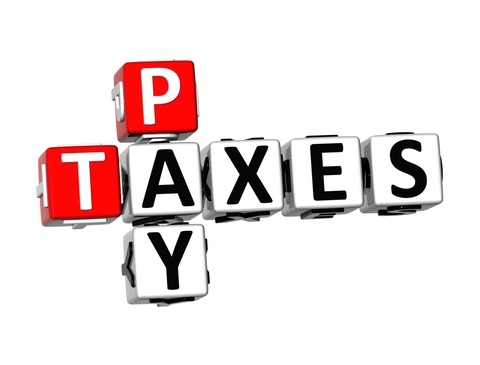 The Tax Cuts and Jobs Act of 2017, which was signed into law on December 22, 2017, radically changes the rules that now apply for taxing the profits of owners of pass-through entities from 2018 through 2025. If you are a sole proprietor (including an independent contractor) or own an interest in a partnership, limited liability company (LLC), or S corporation, these new rules apply to you.
The Tax Cuts and Jobs Act of 2017, which was signed into law on December 22, 2017, radically changes the rules that now apply for taxing the profits of owners of pass-through entities from 2018 through 2025. If you are a sole proprietor (including an independent contractor) or own an interest in a partnership, limited liability company (LLC), or S corporation, these new rules apply to you.
Overview
Under the new law, there’s no special tax rate for pass-through income. During the legislative process, you may have heard talk about a 25% rate, but this didn’t come to pass. Owners pay the tax rate on pass-through income that they pay on their other income, such as salaries and bank interest. However, there is a new tax deduction that effectively lowers the tax rate for some owners of pass-through entities.
Tax rates
For 2017, there are 7 tax brackets for individuals: 10%, 15%, 25%, 28%, 33%, 35%, and 39.6%. Under the new law there are still 7 tax brackets, but they are now: 10%, 12%, 22%, 24%, 32%, 35%, and 37%.
Of course, the tax on pass-through income cannot be viewed in isolation; other tax changes impact the ultimate rate being paid on pass-through income. For example, for an owner in the upper brackets with high state income taxes, the tax rate on pass-through income may be higher because overall taxable income will be higher. Why? Such an owner can no longer deduct on the federal income tax return his or her state and local taxes (including income taxes) above $10,000.
20% deduction
Starting for 2018, there is a new tax deduction of 20% of “qualified business income” (QBI). This is income from a business in the U.S. (including Puerto Rico). Qualified business income is determined for each of an owner’s separate businesses. Only items of income, gain, deduction, and loss allowed in determining taxable income are taken into account for qualified business income.
Example: An S corporation with one shareholder has $100,000 of ordinary income from inventory sales, and makes an expenditure of $25,000 that must be capitalized and amortized over 5 years under applicable tax rules. Qualified business income is $95,000 ($100,000 minus $5,000, which is the current-year ordinary amortization deduction). Qualified business income is not reduced by the entire amount of the capital expenditure, only by the amount deductible in determining the business’ net income for the year.
QBI does not include amounts paid by an S corporation treated as reasonable compensation to the owner. So if an S corporation has income of $100,000 and pays out $40,000 as salary to the owner, only $60,000 is treated as QBI. Similarly QBI does not include guaranteed payments by partnerships/LLCs for services rendered by an owner.
The 20% deduction is not taken on Schedule C, E, or F; it is not a business deduction. Thus, it does not reduce net earnings from self-employment for purposes of self-employment tax. And it’s not a subtraction to figure adjusted gross income. The deduction is taken into account in figuring taxable income on which the owner’s applicable tax rate applies. It can be taken whether or not the owner itemizes personal deductions.
Limitations on the 20% deduction
Wow, a 20% deduction! That means that the federal income tax top rate on an owner isn’t 37%; it’s effectively 29.6%! Yes and no. For owners with modest income, their effective tax rate will be lowered. But for certain highly successful owners, the answer is no. This is because of limitations that come into play, especially for specified service businesses (defined below).
Income threshold. If your taxable income (not just business income) is over $315,000 on a joint return, or $157,500 on any other type of return, then limitations applies. (These dollar amounts will be indexed for inflation after 2018.) The stated purpose of the threshold: “to deter high-income taxpayers from attempting to convert wages or other compensation for personal services to income eligible for the 20% deduction under the provision.”
W-2 limitation. For those with taxable income over the thresholds noted above, the deduction is limited to the lesser of (1) 20% of qualified business income, or (2) the greater of (a) 50% of W-2 wages, or (b) 25% of W-2 wages plus 2.5% of the unadjusted basis after the acquisition of qualified property (there are time limits on what property can be taken into account). This is referred to as the “W-2 limitation.”
Specified service businesses. There’s another rule that effectively limits or bars the 20% deduction for specified service businesses, which are those involved the performance of services in the fields of health, law, consulting, athletics, financial services, brokerage services, or any business where its principal asset is the reputation or skill of one or more of its owners or employees. The amount of QBI that can be taken into account when taxable income exceeds the threshold phases out up to $100,000 for joint filers or $50,000 for other filers. In other words, for owners of these service businesses with taxable income within the phase-out range, only a percentage of taxable income can be used to figure the W-2 limitation.
Example: If a consultant who files a joint return has taxable income of $375,000 so that excess taxable income is $60,000, he’d be able to figure the deduction by applying the W-2 limitation but using only 40% of qualified business income. The deduction is lost entirely by those in a specified service business when taxable income exceeds $415,000 for joint filers or $207,500; all qualified business income is disregarded.
Other limitations. Even after you jump through all of these hoops, the deduction cannot be more than 20% of taxable income minus net capital gains. And if an owner has a loss from one or more businesses, it’s carried forward to the following year, and any 20% deduction allowed in the following year is reduced by the carryover loss.
What it all means
If your taxable income is below the threshold amount, you get the full 20% deduction, regardless of the type of business you’re in. If you’re over the threshold, then a limitation comes into play. And for those in a specified service business, the amount of QBI taken into account is limited within a phase-out range; no deduction can be claimed once the end of the phase-out range is reached.
But even if you do get some or all of the new 20% deduction, as I said earlier, if you live in a state with high income taxes, you may not see tax savings. Your federal income tax bill could increase because of the limited federal income tax deduction for state and local taxes.
Bottom line
This is complicated stuff and IRS guidance is needed to clarify many ambiguities in the new law. You should sit down now with your CPA or other tax advisor to review all of the provisions in the new law and how they impact you.
Don’t wait:
- If you are an S corporation and want to revoke your election, you have until March 15, 2018, so that you are a C corporation as of January 1, 2018 (but you can’t re-elect S status for 5 years). But don’t rush to do this just because of the changes in the tax law; there are many other considerations in your choice of entity.
- You may need to factor in the 20% deduction and other changes for your first 2018 estimated tax payment due on April 17, 2018.
You may also want your attorney to review partnership agreements, etc. to see that they reflect your continued intentions for allocations among owners. A lot to do, so get started now.


